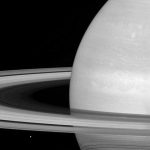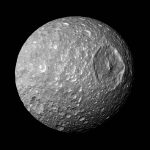New Cassini photos show the hexagon on Saturn’s north pole0
- From Around the Web, Space
- December 8, 2016
The first images from the pentultimate phase of the mission

The first images from the pentultimate phase of the mission

NASA’s Saturn-orbiting spacecraft, Cassini, has begun an unprecedented mission to skim the planet’s rings.

An international team of researchers has found that Saturn’s largest moon Titan has deep canyons filled with liquid hydrocarbons, making the alien moon look a lot like Earth, but with rivers of methane instead of water.

In this view captured by NASA’s Cassini spacecraft on its closest-ever flyby of Saturn’s moon Mimas, large Herschel Crater dominates Mimas, making the moon look like the Death Star in the movie “Star Wars.”

Until recently, we’ve never seen the planet Saturn from the dark side of it, but now Cassini has given us a beautiful sight of a back-lit Saturn.

New close-up photos of Titan, Saturn’s biggest moon, show its mysterious and massive dunes in more detail than ever before.

NASA’s Cassini spacecraft has found deep, steep-sided canyons on Saturn’s moon Titan that are flooded with liquid hydrocarbons. The finding represents the first direct evidence of the presence of liquid-filled channels on Titan, as well as the first observation of canyons hundreds of meters deep.

The gravitational pull of Saturn changes the amount of particles spraying from the south pole of Saturn’s active moon Enceladus at different points in its orbit.

Saturn’s rings give a very interesting view.

Of the hundreds of moons in our solar system, Titan is the only one with a dense atmosphere and large liquid reservoirs on its surface, making it in some ways more like a terrestrial planet.